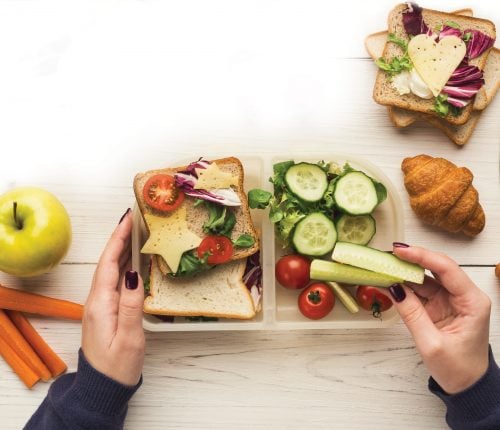
I recently had an interesting conversation along these lines with our team of HFG nutritionists.
What they’ve noticed is people tend to feel they need to be constantly snacking, perhaps driven by advice they’ve heard about eating six small meals a day in order to avoid feeling hungry. It’s a parenting trend, too – the need to have snacks on hand at all times to keep our toddlers and small children from getting hungry.
But, it could be argued, it’s not a bad thing for us to feel the sensation of hunger. It’s part of being intuitive about how we eat, tuning into the body’s natural signals. We are born with these; babies and small children have them and are consequently really good at regulating their food intake… they eat when they’re hungry and don’t eat when they’re not.
As we get older, we tend to lose this ability. We’re conditioned by social and family norms to eat everything on our plates, to eat when the clock strikes lunchtime and to eat when we’re happy or sad or stressed, rather than simply when we’re hungry. Our environment plays a part too. Experiments by behavioural researchers have found it’s very easy for the brain to override the body’s natural signals. We will unconsciously eat more when we’re served larger portions or when we are distracted.
On top of that, buying into the idea we should constantly graze can mean we completely lose touch with what our body really wants. Which may mean we don’t know when to stop eating, either.
The famously healthy Japanese have a concept known as hara hachi bu; eating until we’re 80 per cent full. This is one of the practices to which the Okinawans – a particularly healthy and long-lived Japanese community – attribute their excellent health and lack of disease. Okinawans don’t diet, but they do naturally consume about 25 per cent fewer kilojoules than we typically do.
Eating until you’re 80 per cent full is not quite as simple as just leaving a bit of food on the plate. To properly practise hara hachi bu, we need to get back in touch with those natural signals the body sends us.
That means practising mindfulness at the table: eat slowly, savour the food, check in with ourselves and how full we’re feeling.
And before eating, we need to let ourselves get hungry – physically hungry, not just psychologically craving. That can take a bit of getting used to, but it’s worth doing. When we practise intuitive eating we’re less likely to be influenced by environmental cues such as food advertising or the sight of a tasty display in a café. And kids who eat intuitively and are allowed to get hungry will be more likely to eat the food lovingly prepared for family mealtimes, which makes everyone happier.
www.healthyfood.com










